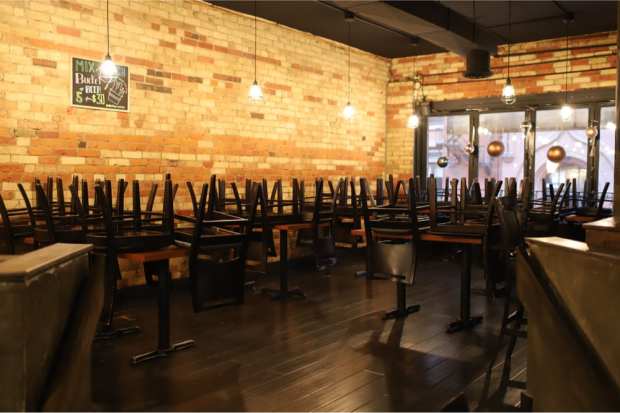Restaurants Lobby For $240B In Added Federal Funding As COVID-19 Rages On

The cash flow crunch may transform the restaurant industry permanently — and none for the better.
The National Restaurant Association Monday told Congress it needs $240 billion in federal aid, and that the industry needs its own funding lifeline to keep it afloat.
As reported by the association on Monday (April 20), the industry has been “devastated by the economic fallout caused by the coronavirus pandemic.” And in a survey conducted across more than 6,500 restaurant operators across the U.S. April 10 through 16, the data tell a sobering tale.
An overwhelming majority — 97 percent — of the respondents said total dollar sales volume was lower for the period between April 1 and April 10 than had been seen a year ago. Sales were down 78 percent, on average, the National Restaurant Association reported.
All told, the industry could lose $50 billion in sales in the month of April alone.
Drilling down into the data a bit, quick-service restaurants (QSRs) saw a relatively more sedate sales drop of 57 percent through the first 10 days of the month — likely because they could more easily pivot to a boost in takeout and delivery orders.
But no one is escaping unscathed. As many as 88 percent of operators have laid off or furloughed staff since the beginning of March, cutting an average of 83 percent of staff. Job losses were most pronounced in the table service segment, said the organization.
The dire stats, where four in 10 restaurants are shuttered, dovetail with PYMNTS’ own findings about just how dire the situation has become.
Consumers have been shifting, increasingly, toward transacting online for meals — through aggregators, QSR or table service firms that have transitioned to takeout. That penetration has tripled from 5 percent of consumers as measured on March 6 to 15 percent on April 11, as relayed Monday by Karen Webster.
But then again, looking at numbers on a larger stage, three-quarters of consumers are eating less at any type of restaurant, via any channel, which includes online.
In other words, the pie is getting smaller even as behavior is shifting.
The shift may be long lasting, as 30 percent of the consumers said they will not go to restaurants as often as they once did.
Relief Needed
The future of course is the future, and at the moment, restaurants are grappling with the pressing cash flow needs of the present.
As reported by Reuters, the National Restaurant Association has said the current federal relief programs have fallen short — as the confines of the Paycheck Protection Program mean many restaurants would not be able to pay back the loans — and recommended that the payback timeframe be 10 years rather than the current two-year period.
The newswire reported that many firms were unable to tap into the PPP program. That comes against the backdrop where, for example, larger restaurant operators such as Shake Shack were able to secure as much as $10 million from the program. Given that the average loan size was $239,000, that shakes out to about 40 separate loans that could have been allocated to other, smaller firms (Shake Shack later returned the money tied to the PPP).
Statistics from the National Restaurant Association bear out the fact that the vertical is dominated by small and medium-sized businesses (SMBs). Consider the fact that nine in 10 restaurants have fewer than 50 employees; as many as seven in 10 restaurants are single-unit operations.
Roughly 3.4 million jobs were created across the sector in the last decade, according to the group, and in the midst of the coronavirus pandemic, more than 8 million workers, or two thirds of the sector’s workforce, have been furloughed or laid off.
In the latest “Main Street on Lockdown” report by PYMNTS, dine-in restaurants said earlier this month that they could last 84 days with federal aid, but only 24 days without such financial lifelines.
As COVID-19 rages on, the clock keeps ticking.